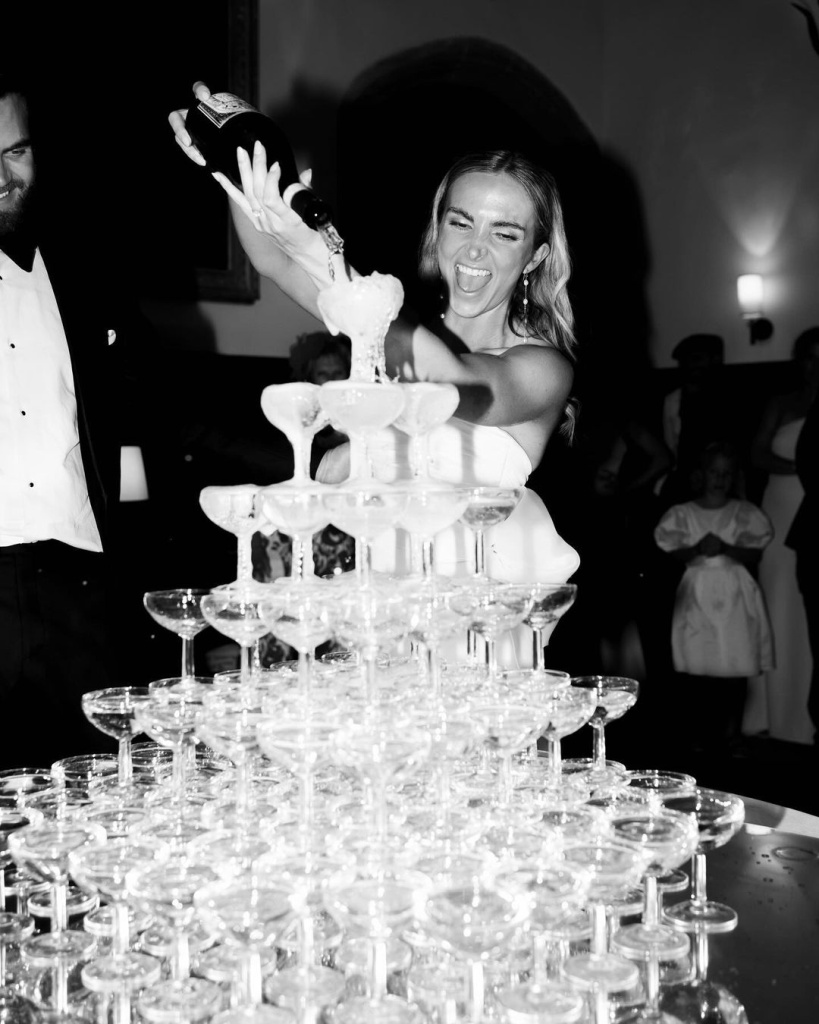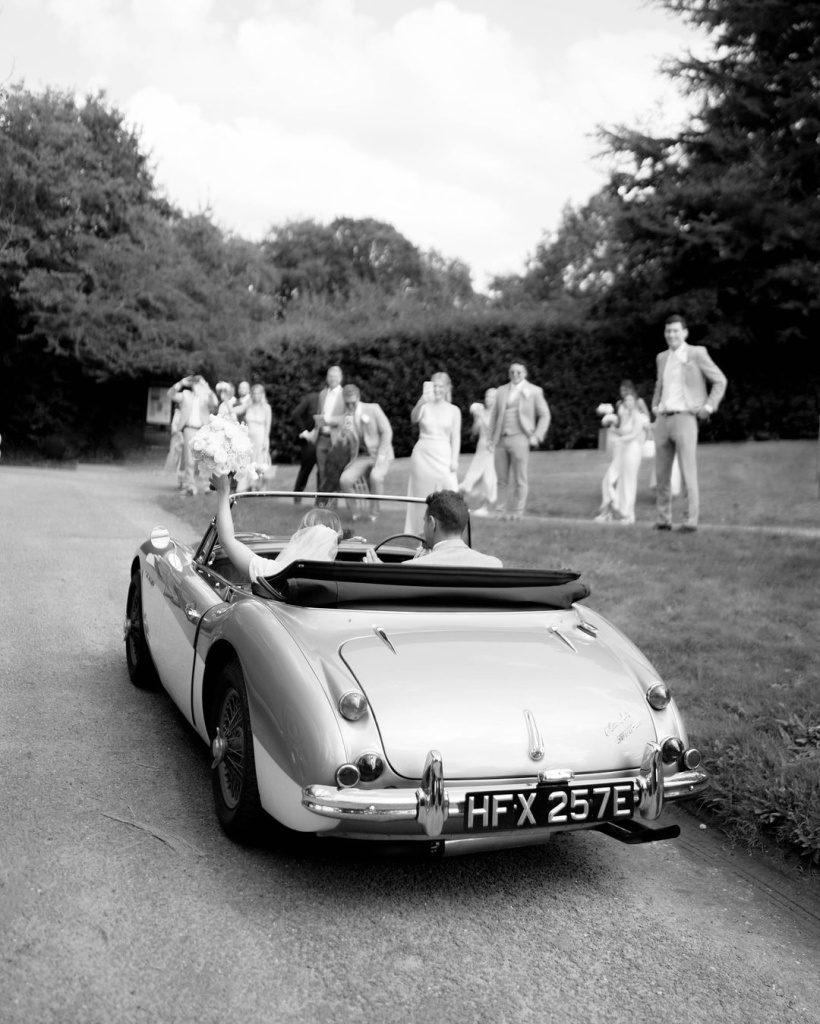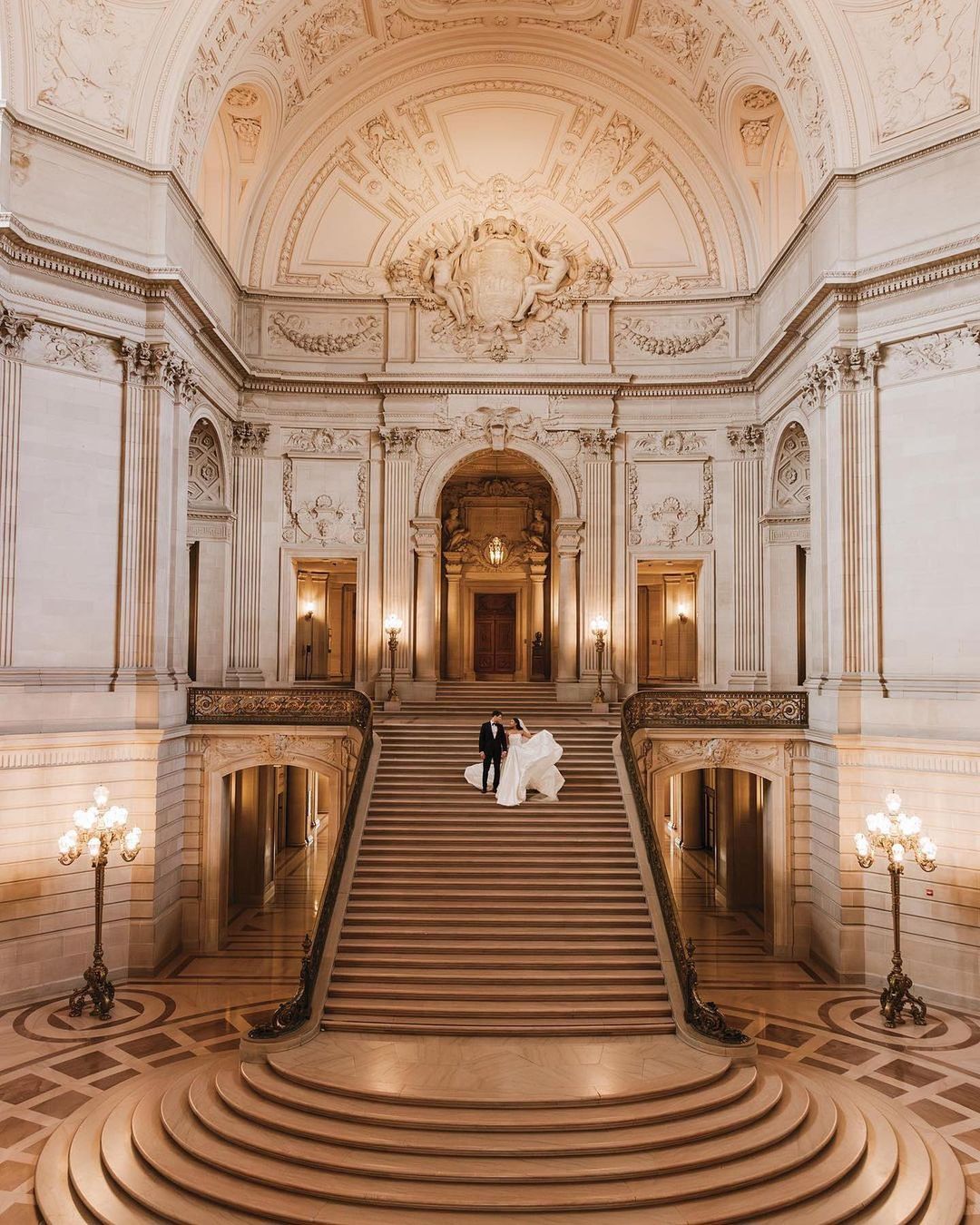Cultural Wedding Traditions in London
- Author: Natali Grace Levine
- Reading time: 8 min 17 sec
- Publication date: 06/27/2024
- Updated: 08/15/2025
Hello, and welcome to a delightful journey through the timeless wedding traditions celebrated in the heart of London! This city, known for its iconic landmarks and royal heritage, also plays host to some of the most charming and deeply-rooted wedding customs in the world. Whether you're planning your big day or just love soaking up wedding culture, let's dive into the classic traditions that make British weddings a beautiful affair to remember.
Find Your Perfect Wedding Vendors
The Quintessentially British Ceremony


The quintessential British wedding ceremony is a splendid blend of history, tradition, and personal touches, creating an atmosphere of elegance and significance. From the iconic church settings to the intricate details of the bride's attire, each aspect of the ceremony has deep cultural roots, yet offers room for modern adaptation and personalization.
Historical Settings and Their Significance
Many London weddings take place in historic churches and chapels that have stood for centuries. These settings are chosen not only for their breathtaking architecture and serene ambiance but also for their cultural and spiritual significance. Each stone and stained glass window echoes the love stories of many generations, providing a profound sense of continuity and heritage.
For those who prefer a secular setting, the rolling gardens and stately manors of London and its surroundings offer a picturesque backdrop. These venues often feature in British literature and cinema, evoking a romantic, timeless British countryside feel that appeals to both traditional and modern tastes.
The Bride's Attire: A Study in Tradition and Elegance
The tradition of the white wedding dress was popularized by Queen Victoria in the 19th century. Originally a symbol of wealth and social status, the white dress has evolved to represent purity and unity. Today, brides may choose from various styles—from classic A-line gowns to contemporary designs—each adding a personal twist while maintaining the traditional white or ivory palette.
The bridal veil, often accompanied by a tiara, has roots in both royalty and folklore, symbolizing modesty and obedience. Modern brides often choose their veils and headpieces to reflect personal style or family tradition, with some opting for vintage pieces passed down through generations.
Incorporating Personal and Cultural Elements
While the traditional British wedding procession is quite structured, couples today enjoy the freedom to tailor it to their personal and family traditions. For instance, some might choose to have both parents walk them down the aisle, reflecting a more modern, inclusive approach to marriage.
The selection of music and readings during the ceremony is a deeply personal choice, often reflecting the couple’s personal tastes, cultural background, and shared experiences. From classical compositions played by a string quartet to modern ballads that have special meaning to the couple, these elements add a unique and memorable touch to the ceremony.
The Role of the Wedding Party
The roles of bridesmaids and groomsmen have their origins in Anglo-Saxon times when they were tasked with protecting the bride and groom from rival suitors and spirits. Today, these roles are more about support and celebration, involving close friends and family members in the joyous occasion.
The best man and maid of honor play pivotal roles, from managing the wedding rings to delivering speeches at the reception. Their involvement is a nod to the tradition of having trusted confidants by your side on your wedding day, a practice that has remained largely unchanged over the centuries.
Something Old, Something New


The tradition of "something old, something new, something borrowed, and something blue" is a charming aspect of London weddings that dates back to Victorian times. This custom is not just about superstition; it's a meaningful way to incorporate family heritage and personal history into the celebration of a new union. Let’s explore each component and see how modern couples can personalize these traditions to make their wedding day even more special.
The Roots of the Tradition
The full saying actually ends with "and a silver sixpence in her shoe," which refers to a wish for prosperity and happiness. Originating in the Victorian era, each item in this quartet is meant to bring good luck to the bride and, by extension, to the marriage. The tradition has been embraced and adapted by many cultures over the years but remains particularly popular in London weddings.
Each Element Explained
"Something old" represents continuity and the bride's link to her past and her family. This could be a piece of jewelry that has been passed down through generations, a swatch of lace from her mother's wedding dress, or even a vintage car used to arrive at the ceremony. Incorporating something old is a beautiful way to honor ancestry and tradition while stepping into a new life.
"Something new" symbolizes hope for the future, optimism, and success in the bride's new life. Often, the wedding dress itself is the new item, but it can also be a gift from the groom or a piece of jewelry bought specifically for the wedding day. Choosing something new is about embracing the journey ahead and the new ties being formed.
"Something borrowed" is typically an item lent by a happily married friend or relative, transferring good fortune and happiness to the new couple. This could be a piece of jewelry, a veil, or even a handkerchief. It's particularly poignant if the item has sentimental value, symbolizing the support and love of family and friends.
Historically, blue has been associated with weddings, symbolizing purity and fidelity. Modern brides might choose a blue garter, or ribbon, or incorporate blue flowers in their bouquet. This element of the tradition serves as a visual expression of loyalty and steadfastness.
Customizing the Tradition
Modern couples often put unique spins on these traditions to reflect their personalities. For example, "something old" could be a vintage map of a place significant to the couple, and "something new" might be a piece of art that starts a collection for their new home together.
For intercultural marriages, items can reflect different cultural heritages, honoring both backgrounds in a meaningful way. This could involve borrowing a piece of traditional attire from one culture and blending it with color elements from another.
Some couples choose to make these traditions more interactive by involving guests. For instance, they might ask guests to contribute small "old" or "borrowed" items to a decorative display or wear something blue to the wedding.
The Regal Reception


The regal reception is where the elegance of a traditional London wedding truly comes to life. After the solemnity of the ceremony, the reception offers a space for joy, celebration, and grandeur, reflecting the storied traditions of British social gatherings. This segment of the wedding day allows couples to showcase their personal style while adhering to time-honored customs.
Historical Elegance and Venue Selection
Many London receptions take place in stately homes or royal palaces that have opened their doors to public events. These venues are steeped in history and often feature ornate ballrooms, sprawling gardens, and stunning architectural details that provide a majestic backdrop for the festivities.
For those who prefer a city vibe, historic hotels, and banquet halls in London offer grand spaces with rich decor, crystal chandeliers, and opulent dining rooms. These venues combine convenience with elegance, often located near iconic London landmarks for beautiful photo opportunities.
Reception Traditions and Customs
A staple at many traditional British receptions is the receiving line. This is where the newlyweds, along with their parents and any honorary hosts, greet guests personally. It reflects the importance of family and personal connection in British culture, ensuring that each guest is formally welcomed and thanked for attending.
The Wedding Breakfast
Despite its name, the wedding breakfast doesn’t involve morning meals. Traditionally, it's the first meal the couple shares as a married duo, thus breaking their fast of single life. Today, this meal is a lavish affair with multiple courses, featuring gourmet interpretations of British cuisine and fine wines.
The Speeches and Toasts
Speeches are a heartfelt highlight at London wedding receptions. Traditionally, the father of the bride speaks first, welcoming the guests and sharing anecdotes about the bride. The groom follows, thanking the guests and expressing his love and appreciation for his bride, and finally, the best man delivers his speech, often a mix of humor and sentiment.
Each speech typically culminates in a toast, where guests raise their glasses to honor the couple. These moments are not just about humor or gratitude but also about weaving the collective good wishes of friends and family into the fabric of the couple’s new life together.
The Festive Ceilidh Dance


The ceilidh (pronounced 'kay-lee') is a highlight of many London weddings, particularly those with Scottish or Irish heritage. This festive dance is more than just a series of steps; it’s a vibrant celebration of culture, community, and the joy of the newlywed couple.
Historical Significance and Cultural Roots
The ceilidh originated in Scotland and Ireland as a social gathering involving music, storytelling, and dancing. Traditionally, these gatherings were not only for entertainment but also for communal bonding and celebrating local culture. The incorporation of a ceilidh in a wedding reception is a nod to these traditions, fostering a sense of community and shared joy among the wedding guests.
The Role of Live Music
Live music is essential to a ceilidh, with traditional instruments like the fiddle, accordion, and bagpipes playing a central role. The music is lively and rhythmic, designed to keep the energy high and encourage everyone to participate in the dancing.
The Dance: A Symbol of Unity and Celebration
The dances at a ceilidh are usually caller-led, meaning a designated person (the caller) instructs the guests on the steps. Dances such as the Dashing White Sergeant or the Gay Gordons are popular choices. These dances involve groups or pairs, making them perfect for mixing and mingling among guests who may not know each other well.
Modern Adaptations
While traditional steps and sequences are still popular, many couples now incorporate modern or simplified versions of ceilidh dances. This makes the dancing more accessible to guests who are unfamiliar with traditional Scottish or Irish steps, ensuring everyone can participate and enjoy the fun.
Photographic Opportunities
The dynamic movements and expressions during a ceilidh provide unique opportunities for memorable photographs. The candid shots captured during these dances are often among the most cherished by the couple.
The Grand Exit


The grand exit is a storied tradition in London weddings, serving as the celebratory conclusion to the wedding festivities. It's a moment filled with joy, symbolism, and a touch of theatrical flair as the couple departs from their reception to begin their new life together. This ritual not only provides a memorable closure to the wedding day but also allows for a final burst of celebration among the guests.
The Symbolism of the Grand Exit
The grand exit represents the transition from the wedding celebration to the couple's future life together. It's a poignant reminder of the journey that the newlyweds are about to embark on, symbolically stepping out as a married pair into the world.
Lasting Memories


This part of the wedding is often one of the most vivid memories for the couple and their guests, as it caps off the festivities with excitement and emotion. It's a moment that is frequently captured in photos and videos, preserving the joy and energy of the day.
Traditional and Modern Elements
Traditionally, guests throw rice or confetti as the couple makes their exit. This is meant to symbolize fertility and prosperity. In modern times, alternatives like flower petals, bubbles, or even sparklers have become popular, providing the same festive atmosphere while being more environmentally friendly and photogenic.
Many couples choose to leave their reception in a classic car, such as a vintage Rolls Royce or a Bentley, which adds a touch of elegance and nostalgia to the departure. This not only makes for a stylish exit but also great photo opportunities.
The Role of Guests
The grand exit is one of the final acts in which guests participate actively. Their involvement in cheering, tossing confetti, and waving goodbye contributes to the communal spirit of the event, reinforcing their support and well wishes for the couple's future.
Weddings in London are a perfect blend of grandeur and tradition, each element echoing centuries of cultural heritage. Whether it's the historical settings, the elegant attire, or the unique customs, these weddings celebrate not just a union of hearts but also a deep appreciation for time-honored traditions. Here's to love, tradition, and the timeless beauty of London weddings!


















